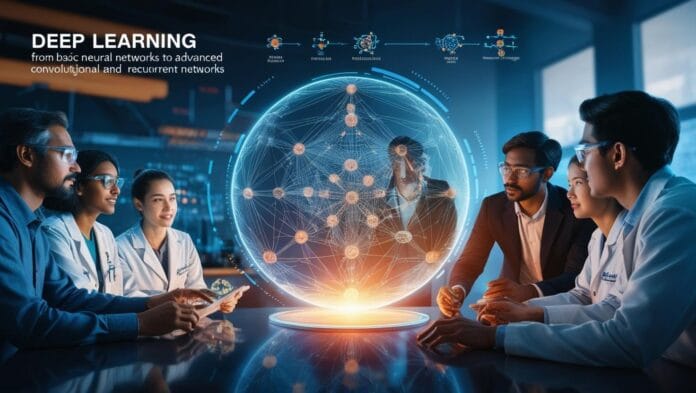Deep Learning Techniques are essential methods within Artificial Intelligence that use artificial neural networks to process vast amounts of data. These techniques enable machines to learn from data, improve performance, and solve complex problems in various industries.
Contents
What is Deep Learning?
Deep Learning Techniques involve training neural networks to recognize patterns, make decisions, and generate outputs from complex data. Unlike traditional algorithms, these techniques enhance AI systems by learning from data over time, making them adaptable and efficient.
Key Components of Deep Learning Techniques
- Neural Networks: The foundational structure of deep learning, inspired by biological neurons, consisting of layers (input, hidden, and output) that process data. Neural networks are crucial to modern AI systems.
- Convolutional Neural Networks (CNNs): Specialized neural networks designed for image processing, widely used in computer vision and facial recognition. These networks excel in analyzing visual data.
- Recurrent Neural Networks (RNNs): Models designed to process sequential data, such as speech and language, essential for Natural Language Processing (NLP). This deep learning technique is particularly useful for time-series data.
- Generative Adversarial Networks (GANs): Consists of two competing networks, one generating data and the other evaluating it, used for creating realistic images and content. This technique enhances creative AI applications.
Applications of Deep Learning Techniques
- Healthcare: Deep Learning Techniques assist in diagnosing diseases from medical images, predicting patient outcomes, and personalizing treatment plans. These techniques enhance accuracy and efficiency.
- Natural Language Processing (NLP): Models like GPT-4 use deep learning techniques to understand and generate human language, enhancing chatbots, translation tools, and content creation.
- Autonomous Vehicles: Deep learning algorithms are essential for perception, decision-making, and navigation in self-driving cars. This technique ensures safer and more efficient navigation.
- Art and Creativity: GANs are used to create realistic art, music, and videos, opening new possibilities for creative industries.
Internal Links
- Learn about Neural Networks and their role in Deep Learning Techniques.
- Explore how Convolutional Neural Networks are used in computer vision.
- Discover how Generative Adversarial Networks are revolutionizing content creation.
- Understand the applications of Recurrent Neural Networks in NLP.
External Links
- Deep Learning Specialization by Andrew Ng
- Fast.ai – Practical Deep Learning for Coders
- DeepMind – Research & Innovation
Example:
- Andrew Ng’s Course: A detailed course on deep learning fundamentals and neural networks.
- Fast.ai: Hands-on tutorials for building deep learning models.
- DeepMind: Innovative research on deep learning and AI applications.
Sources:
- Coursera, Fast.ai, DeepMind.
